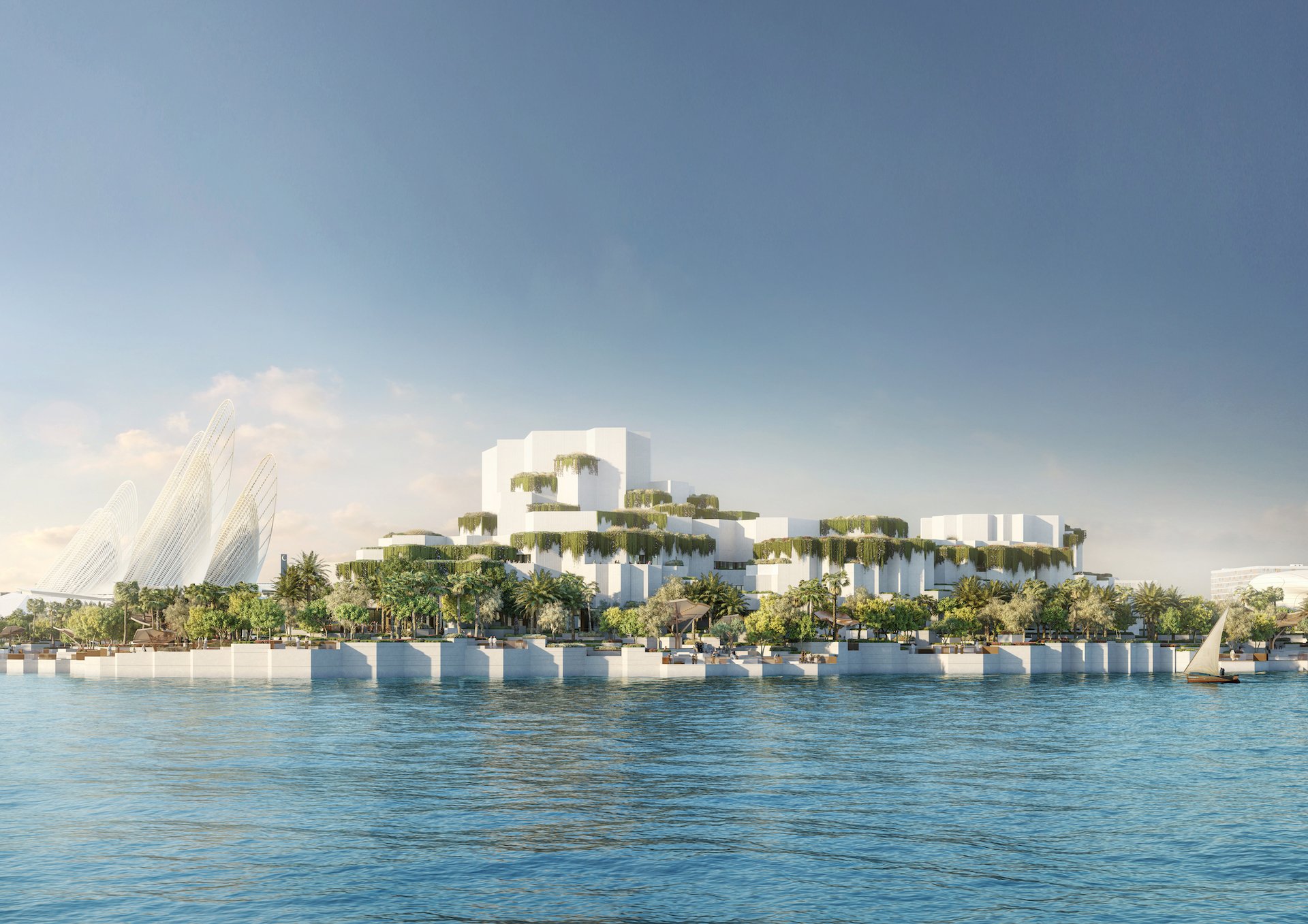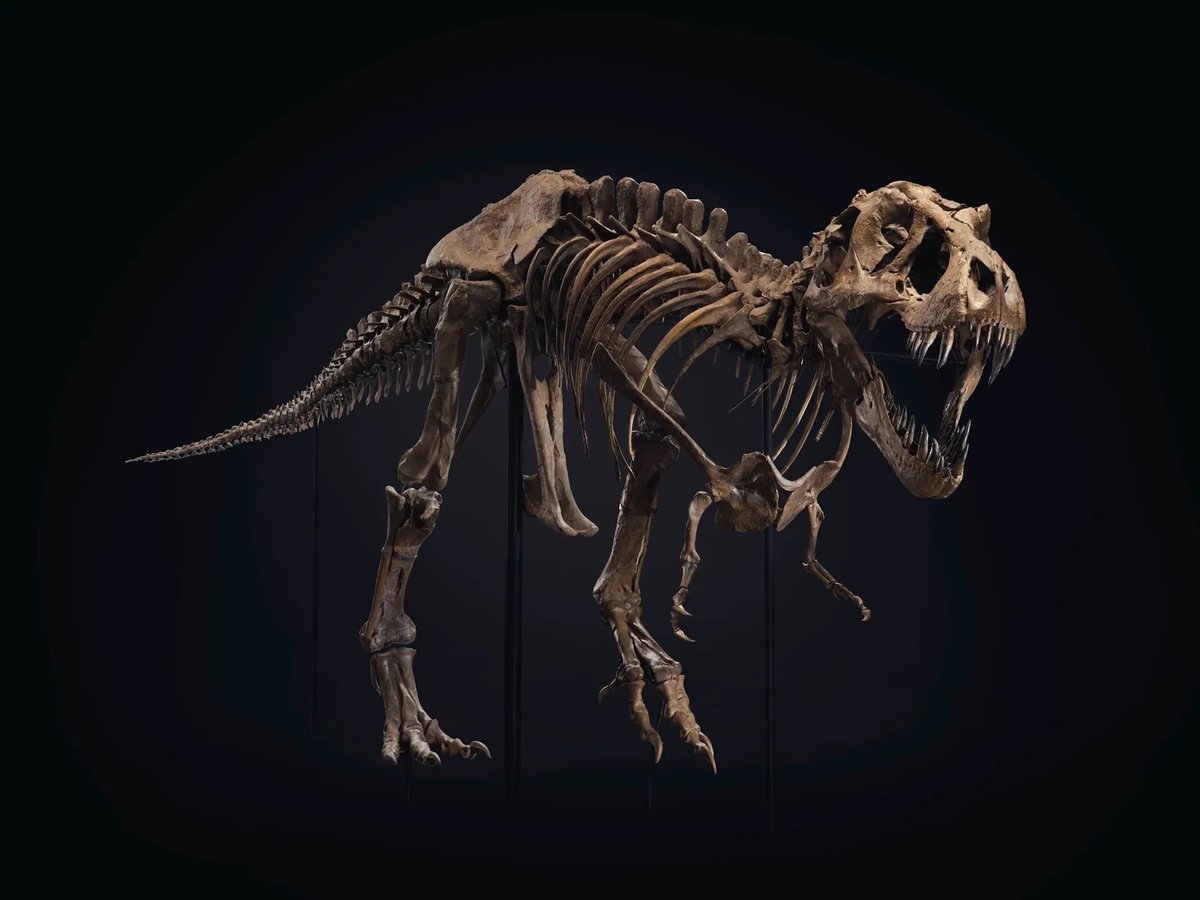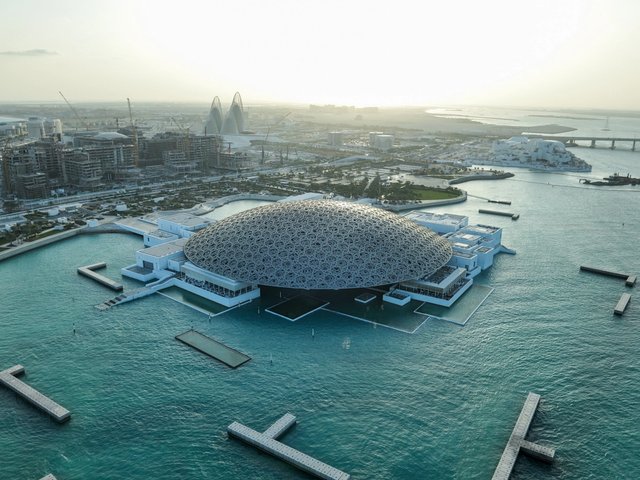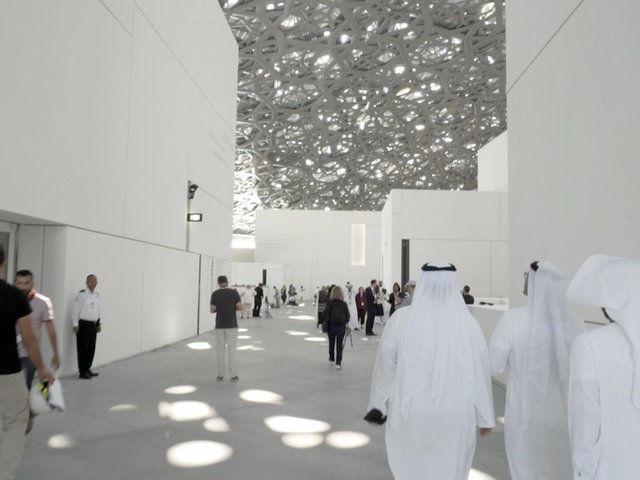Stan, the 39ft.-long fossilised skeleton of a Tyrannosaurus Rex that sold for a record-breaking $27.5m hammer price (with fees, $32m) during a Christie’s sale of 20th-century art in October 2020, will be a leading attraction of the newly announced Natural History Museum Abu Dhabi.
Construction of the new museum on Saadiyat Island, the emirate’s long-planned cultural destination that houses the Louvre Abu Dhabi and will one day be home to a Guggenheim outpost and the Zayed National Museum, has already begun and is expected to be complete at the end of 2025.
The 35,000 sq. m museum has been designed by the Dutch architecture firm Mecanoo, whose other cultural projects include the Het Hof van Nederland Museum in Dordrecht, Netherlands and the Longgang Cultural Centre in Shenzhen, China. Its design for the Natural History Museum Abu Dhabi is inspired by natural rock formations in the region and the inherent geometry of cells.

Rendering of the Natural History Museum Abu Dhabi Courtesy Mecanoo
In addition to Stan the T-Rex, the only other object known to be in the forthcoming institution’s collection is a specimen from the Murchison meteorite, which fell in Australia in 1969 and is rich in organic compounds and other materials that have taught scientists a great deal about the history of our solar system.
“These are awe-inspiring gifts from nature that we are proud to share with the world— unlocking millions of years of knowledge to not only advance scientific discovery but to inspire our children to protect our planet’s future,” Mohamed Khalifa Al Mubarak, chairman of the Abu Dhabi Department of Culture and Tourism (DCT), said in a statement.
The museum is being developed by DCT in partnership with Miral, a local company that develops destinations and experiential attractions (past endeavours include the Ferrari World Abu Dhabi and Warner Bros. World Abu Dhabi theme parks).
The Stan fossil, which shared star billing with works by Cy Twombly and Pablo Picasso at Christie’s in New York, was consigned by the Black Hills Institute of Geological Research in South Dakota and marketed as one of the largest and most complete T-Rex skeletons ever discovered. After a ten-minute bidding war it ultimately sold to a bidder on the phone with James Hyslop, the UK-based head of natural history at Christie’s, for more than four times its estimate. The result nearly quadrupled the previous record for a dinosaur fossil at auction, set in 1997 at Sotheby’s by Sue, a T-Rex skeleton that now resides at the Field Museum in Chicago.
Stan is certainly the largest but not the most expensive Christie’s lot that has been touted as a major attraction for Saadiyat Island, which is a centrepiece of efforts to diversify the oil-centric economy of the United Arab Emirates by turning Abu Dhabi into a major cultural tourism destination. The Louvre Abu Dhabi was, for a time, the intended destination for Salvator Mundi (around 1500), which Christie’s sold as an authenticated Leonardo da Vinci for $450m in 2017. It has not been seen publicly since.





